How To Identify Forced Labor In Your Supply Chain
Forced labor continues to threaten the supply chains of companies that rely on Chinese manufacturing. The advisory highlights the reputational, economic, and legal risk for businesses whose supply chains may be exposed to human rights abuses in Xinjiang.
Snippets From The Download:
Verify Identities of Known High-Risk Companies
You need to determine whether your suppliers show up in these reports, but inconsistent company name translations and scant identifiers present a challenge. Avoid these pitfalls by verifying names and identifying information (e.g. addresses, ID numbers, Chinese/English names) in official sources.
Look for Indicators of Forced Labor in Public Records
Use Chinese public records to identify companies at high risk for labor abuses before they are exposed in the media or targeted by regulators. Look for the following indicators of forced labor in Chinese manufacturing, all of which can be found in public records.
Screen Beneficial Owners and Related Companies
If one of your supplier’s parents or subsidiaries employs forced labor, your supply chain could still be exposed. Using Sayari Graph, you can surface these indicators across millions of Chinese corporate records and proactively identify forced labor risk in your supply chain.
Sayari Graph Product Features:
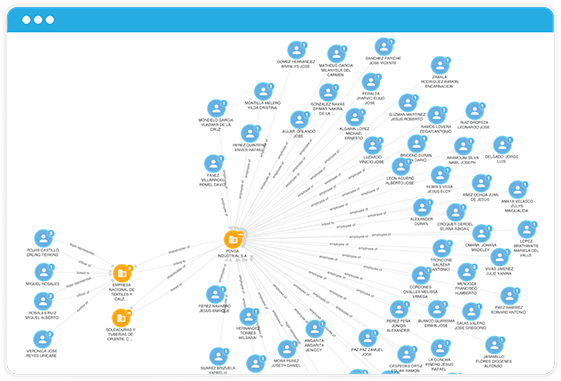
Normalized Global Public Records Data
Our proprietary pipelines collect, extract, enrich, match, and analyze high-value public information from over 150 countries.
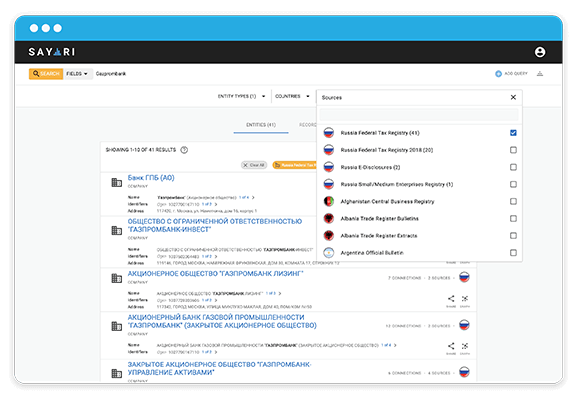
Multilingual Search Across Jurisdictions & Attributes
Sayari Graph enables users to search records from around the world with the freedom to select specific data attributes or free text search.
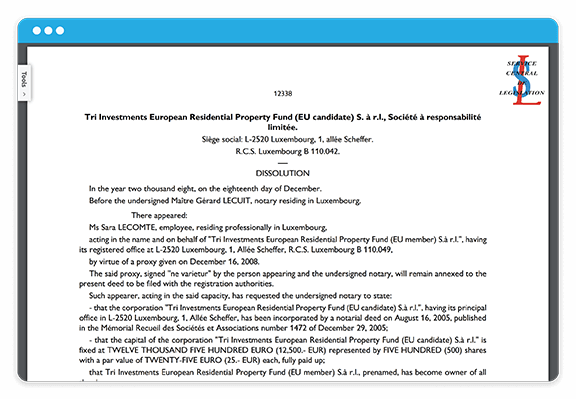
Original Source Documentation Provided for Every Relationship & Attribute
Official public records are essential to understanding the ownership and control links tied to potential clients, vendors, or targets of an investigation.
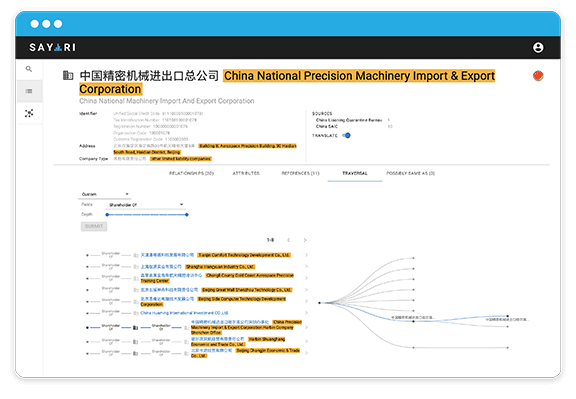
Navigate & Visualize Cross-Border Corporate Hierarchy, UBO & Subsidiary Structures
Sayari Graph enables users to quickly navigate complex, cross-border corporate structures with network visualizations powered by custom graph-based matching and entity resolution models, built on a foundation of investigative and regional domain expertise.
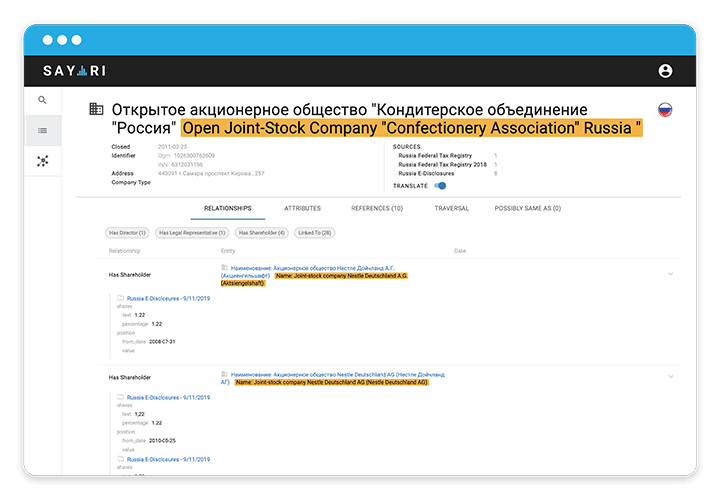
Data Refreshes & Timeline View of Corporate Entities
Sayari provides time-stamped copies of records after every data refresh cycle so users can rewind ownership history and assess historical changes.
About Sayari:
Sayari provides data intelligence platforms to power the fight against financial crime, increase corporate transparency in high-risk places, and support critical national security mission sets. The top global financial institutions, Fortune 100 corporations, financial crime regulators, and enforcement agencies in 35 countries trust Sayari every day.